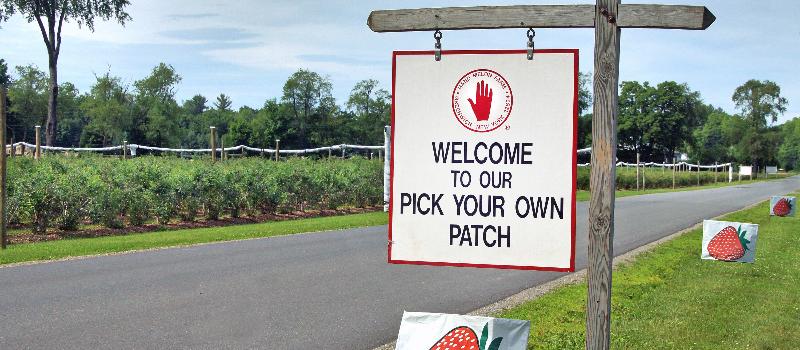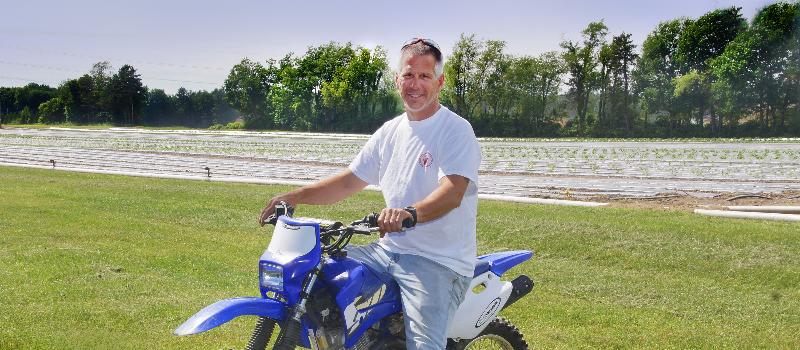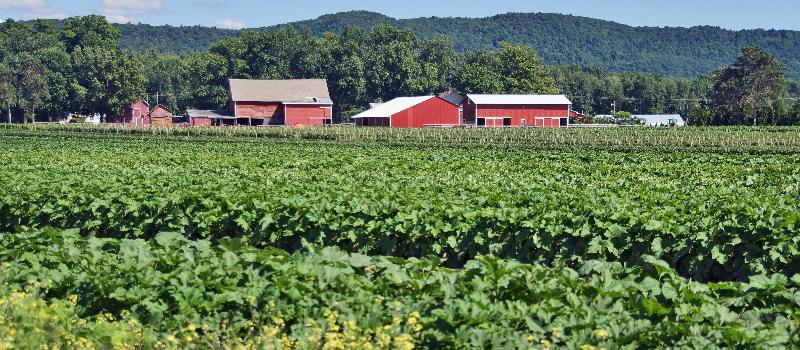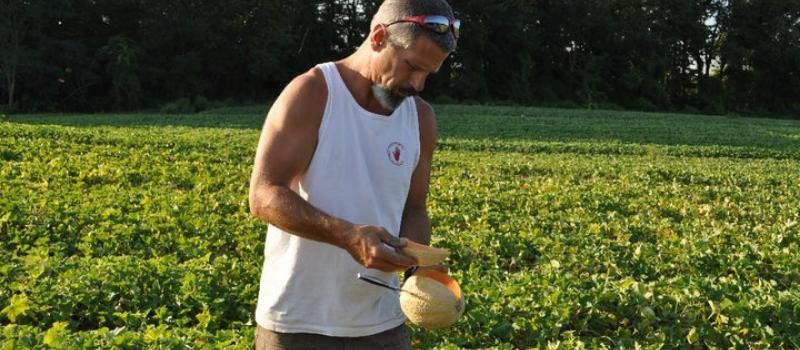419 ACRES conserved IN THE TOWN OF EASTON
The fruit of their labor is as sweet as ever. And Forever.
The qualities that led to success at the Hand Melon Farm are no different today than they were in 1908 – experimentation, courage and innovation.
In 1908, Aaron Allen Hand retired from the downstate business world, moved to Greenwich and purchased a 175-acre dairy farm, a farm the neighbors jokingly referred to as “the county sand pile.” After only a year, he passed away, leaving his 18 year old son, Allen F. Hand, to run the family farm.
After 15 years of dairy farming, Allen had gained respect amongst his peers. He began to think that his fertile fields, formed from the Batten Kill’s sands, could prove valuable for more than just feeding his herd.
Experimentation – from Dairy to Muskmelons
In 1925, Allen decided to try a new exotic cash crop, muskmelons. He planted one acre of the melons in an alfalfa field. To describe his endeavor as a success is a vast understatement. With some experimentation and adjustments to the planting process, he timed his harvest to coincide with the Saratoga racing season. By 1939, Allen was growing 18 acres of melons, had trademarked the name Hand Melon, and created the distinctive red and white logo you see today. According to the September 1950 issue of Farm Journal, Allen was grossing $19,000 a year on melons (or over $450,000 in today’s dollars). The county sand pile had become a thriving business.
With a loyal following and enthusiastic fans that included Jackie Kennedy, Elizabeth Arden, the Duchess of Marlborough, Arthur Ash, Presidents Eisenhower, Bush and Nixon, the New York Yankees and Martha Stewart, the Hand Melon farm became famous for its rare variety of melons known as the Saticoy.
Eventually, Allen’s son, “AA”, took over the thriving business. He shut down the dairy farm and focused on growing the fruit and vegetable operation. It was under AA’s leadership that the Hand Melon Farm expanded from selling to distributors and retailing at their own farmstand on Route 29 to shipping “mail-order melons” and starting a pick-your-own strawberry, blueberry, raspberry, tomato, and pepper business.
By the age of 15, AA’s son, John, was learning the business. He became a partner before graduating from Cornell and moved home immediately thereafter to run the farm with his Dad. After his fourth season, John left the farm indefinitely and landed in Colorado with a ski resort job. Just two months later, he got a call from his mother. He needed to come home and run the farm. His Dad’s cancer was back. After AA passed away in 1988, John closed the farm for a year and worked as a carpenter in Manchester and in the snowmaking control room at Stratton Mountain ski resort.
Courage - Do you try again?
John returned home to the farm in 1990 and had modest success growing mostly melons, strawberries, raspberries and sweet corn. Three years later, a disease wiped out the melons, the strawberries froze, and he struggled with the blueberries. At 31 years old, he was faced with the overwhelming loss of his crops, more debt than most people incur in their entire lives, and the pressure of a family legacy.
His mother Carol (a silent partner) told him to run the farm as he saw fit. So, with a stack of seed catalogs, he went for it. In true Hand Family fashion and with a good head for business, he experimented. He grew more sweet corn and a mixed vegetable patch. He also focused on the wholesale business. The sand pile began to flourish again.
Innovation
Today, the Hand Melon Farm produces over 140 varieties of fruits, vegetables, herbs and ornamental fall gourds on 419 acres. They employ integrated pest management (IPM) principles, crop rotation, composting and resting fields.
It took John a long time and some soul searching to consider conserving his farm. With no plans to retire, and a crummy backswing, he plans to work until he is no longer able. In 2007, John heard news of another melon farm selling out to a developer. That farm was going to be turned into a mall and a parking lot. “I can’t imagine that happening here”, John thought.
The Future is Sweet
John knew that conserving the land was going to be a lengthy process, but with the proceeds he would receive from conserving his farm, he could make some major investments in the irrigation system, solar panels and ensure that his family legacy would carry on. “It’s an exciting time on the farm,” John says, “It has taken six years but it’s all coming together at the same time.”
John has already left the county sand pile in better condition than he found it. With no debt, a state-of-the-art irrigation system, and no power bill for the next 30 years, John thinks his Dad would approve. And you can see it all in action during this upcoming strawberry picking season in June.
Funding for this project was made possible by the New York State Environmental Protection Fund and the Open Space Institute.
“When the last parcel was transferred to me, it brought tears to my eyes. Finally owning the entire farm changed my whole perspective.” – John Hand
“I believe my father was part of the original conservation movement in Easton. I’m pretty sure he would approve.”





